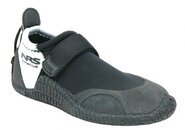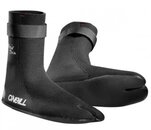- Messages
- 5,884
- Reaction score
- 2,997
- Location
- Lake Worth, Florida, United States
- # of dives
- I'm a Fish!
Based on what you are saying, the only disadvantage of the free diving fins "in the water" will be when diving in the colder time of the year for us and having to wear either a drysuit or heavier boots which makes it difficult with the full foot fins.

Soles like this are ideal....and you can wear a neoprene sock inside this for extra warmth...or, find a bootie that is well insulated, with the same fairly thin sole this has. ** I just cut off the strap going over the instep...totally non-functional, and you could feel it inside a foot pocket.





